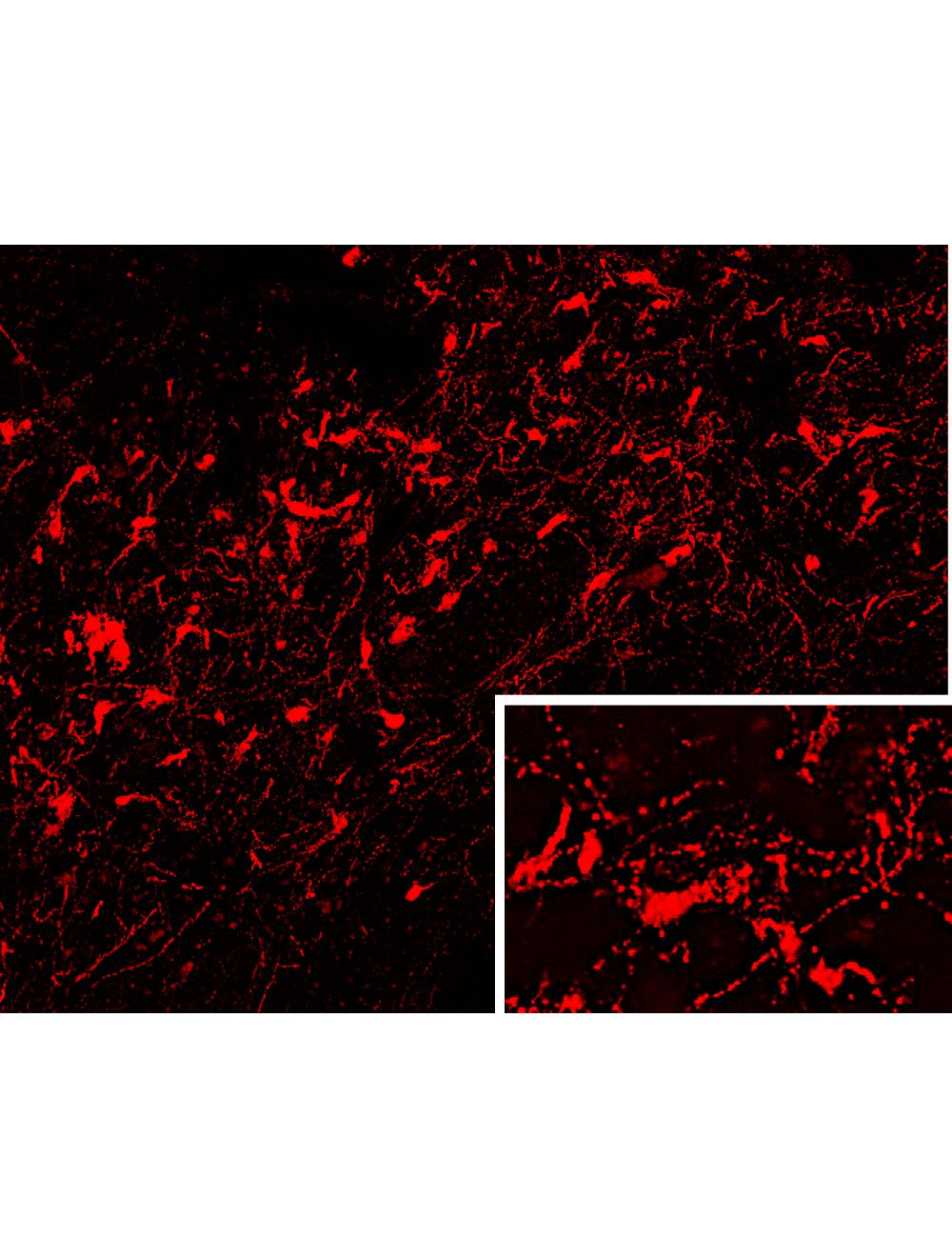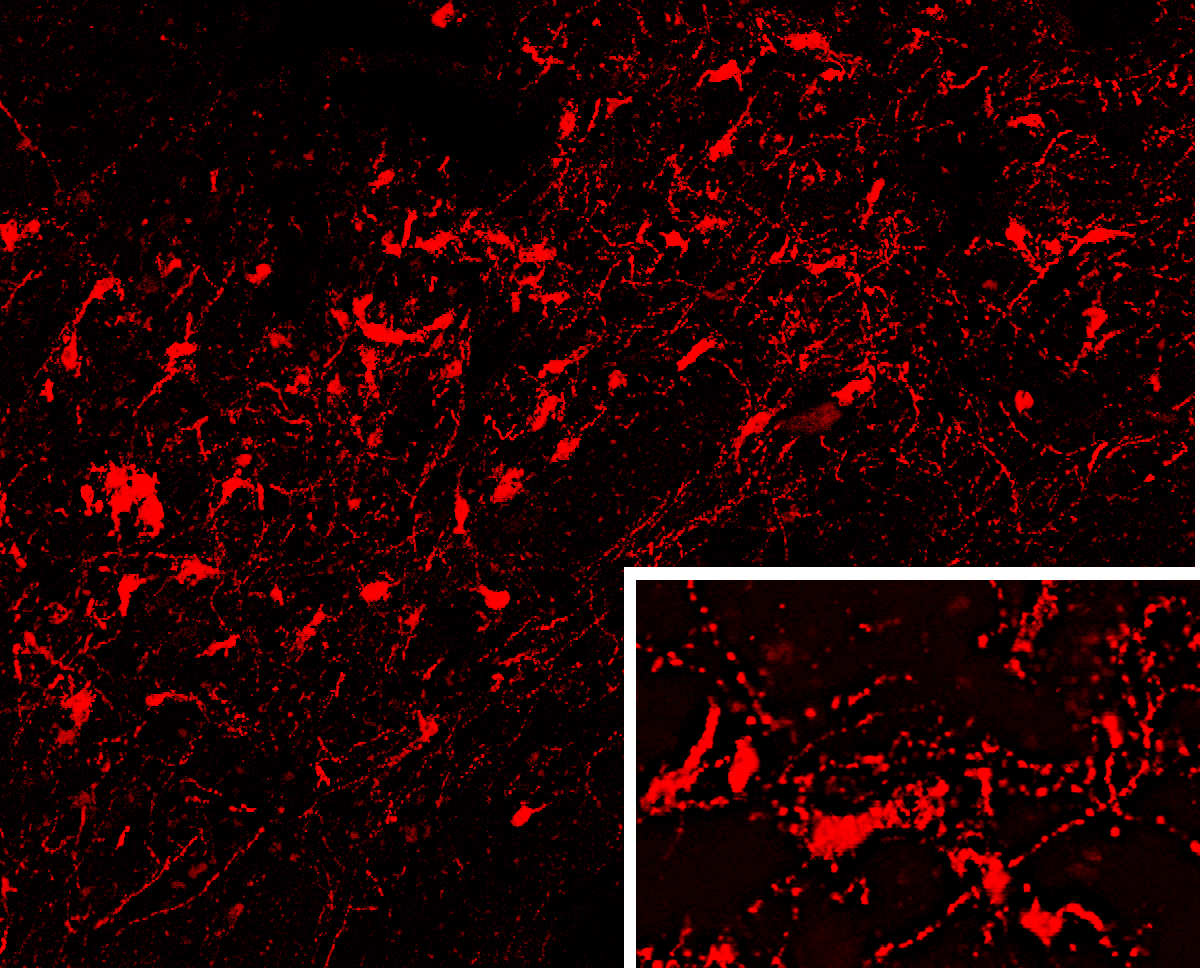Oxytocin, Guinea pig Polyclonal Antibody
- Product Name Oxytocin, Guinea pig Polyclonal Antibody
-
Product Description
Guinea Pig anti-Oxytocin Polyclonal Antibody (Unconjugated), suitable for IHC-Frozen.
- Alternative Names OT; OXT;OT-NPI; OT-NPI;
- Application(s) IHC-Frozen
- Antibody Host Guinea Pig
- Antibody Type Polyclonal
- Specificity Specificity was demonstrated by immunohistochemistry. This antibody is known to react with sheep. Other species have not yet been tested.
- Species Reactivity Human, Sheep
- Immunogen Description A synthetic peptide (CYIQNCPLG) corresponding to the amino acids 20-28 from human Oxytocin-neurophysin 1. This peptide was conjugated to carrier protein to enhance the immunological response.
- Conjugate Unconjugated
- Purity Description Neat serum.
- Regulatory Status For research use only.
Product Info
-
Product Description
Guinea Pig anti-Oxytocin Polyclonal Antibody (Unconjugated), suitable for IHC-Frozen.
- Application(s) IHC-Frozen
- Application Details IHC. A concentration of 1 in 2000 is recommended for IHC. IHC performed in sheep brain (hypothalamus) demonstrates intense staining of cells and terminals. No staining is evident when the primary antibody is pre-absorbed with 0.5 mg/mL of oxytocin. Biosensis recommends optimal dilutions/concentrations should be determined by the end user.
- Target Oxytocin
- Specificity Specificity was demonstrated by immunohistochemistry. This antibody is known to react with sheep. Other species have not yet been tested.
- Target Host Species Human
- Species Reactivity Human, Sheep
- Antibody Host Guinea Pig
- Antibody Type Polyclonal
- Antibody Isotype Mixed
- Conjugate Unconjugated
- Immunogen Description A synthetic peptide (CYIQNCPLG) corresponding to the amino acids 20-28 from human Oxytocin-neurophysin 1. This peptide was conjugated to carrier protein to enhance the immunological response.
- Purity Description Neat serum.
- Format Lyophilized
- Reconstitution Instructions Spin vial briefly before opening. Reconstitute in 50 µL sterile-filtered, ultrapure water. Centrifuge to remove any insoluble material.
- Storage Instructions Store lyophilized antibody at 2-8ºC or lower. After reconstitution, divide into aliquots and store at -20°C, or lower, for optimal long term stability. It is recommended that a reconstituted aliquot is stored at 2-8°C for no longer than 2 weeks. Allocation of an appropriate anti-bacterial agent can increase shelf life by several weeks. Glycerol (1:1) can be added to neat serum for additional stability if intended use does not prevent this.
- Batch Number Please see item label.
-
Expiration Date
12 months after date of receipt (lyophilized, unopened vial).
- Alternative Names OT; OXT;OT-NPI; OT-NPI;
- Uniprot Number P01178
- Uniprot Number/Name P01178 (NEU1_HUMAN)
- Scientific Background Oxytocin causes contraction of the smooth muscle of the uterus and of the mammary gland. It belongs to the vasopressin/oxytocin family. Oxytocin is secreted.
- Shipping Temperature 25°C (ambient)
- UNSPSC CODE 41116161
- Regulatory Status For research use only.
Specifications
- General References Thompson MR, Callaghan PD, Hunt GE, Cornish JL, Mcgregor IS. (2007). A role for oxytocin and 5-HT1A receptors in the prosocial effects of 3,4 Methylendioxymethamphetamine (ecstasy). Neuroscience. 146(2) pp. 509-14.

 1800 605-5127
1800 605-5127 +61 (0)8 8352 7711
+61 (0)8 8352 7711




